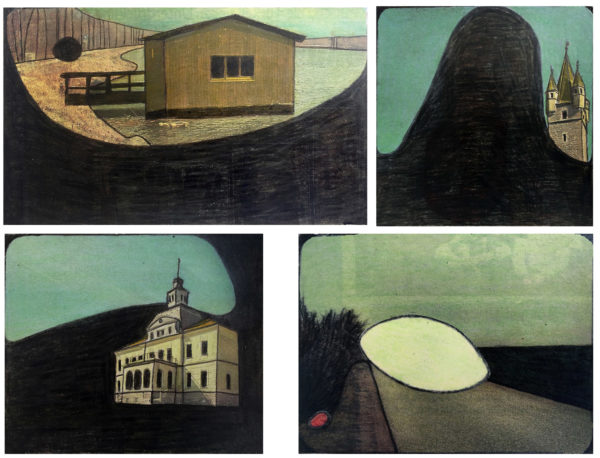After he left school, Leopold Strobl began to call himself an artist. He regularly works in the studio at the Gugging House in Vienna. “I have to do it, day and night . . . paint the sky green,” he said, when he was asked what he felt when he drew. He always makes his drawings the same way, starting from a newspaper image or a photograph that serves as his graphic base. Once he chooses his motif, he first defines, elaborates, designs, and develops the black areas (always flat plane and always green), and finally he marks the border between darkness and light. Sometimes, part of the original photograph remains visible; other times, it is completely covered. The black areas form a negative space that dominate each composition. In some, they are part of the landscape, like a sort of mineralogical formation, and sometimes they seem to be an organic material that might invade or absorb the entire image or transform it into a vignette lost in the middle of a compact dark mass. From this association or bringing together of assorted shapes emerges an effect of dissonance that contributes to the strangeness of these works, which generally lean toward abstraction. In some images, Strobl chooses one element to rework in color, introducing a more realistic dimension into the work. Once the work is finished, Strobl glues it onto a piece of drawing paper and then signs it. The signature consists of his name and a cross with rays surrounded by a heart. This religious symbol is highly significant to him, as he is very devout. “Sometimes I feel a bit bizarre,” he has said, “as if in some way I’m not part of this world.” He is married and lives in Kritzendorf, Austria.

